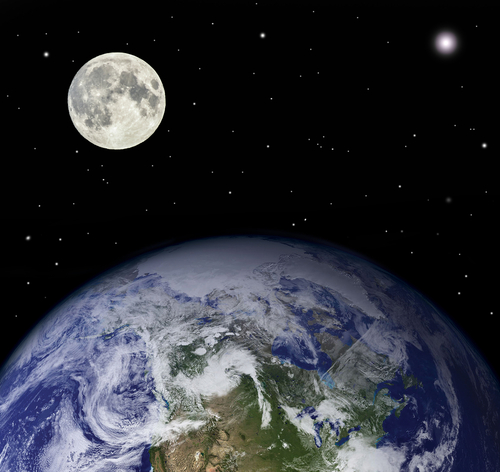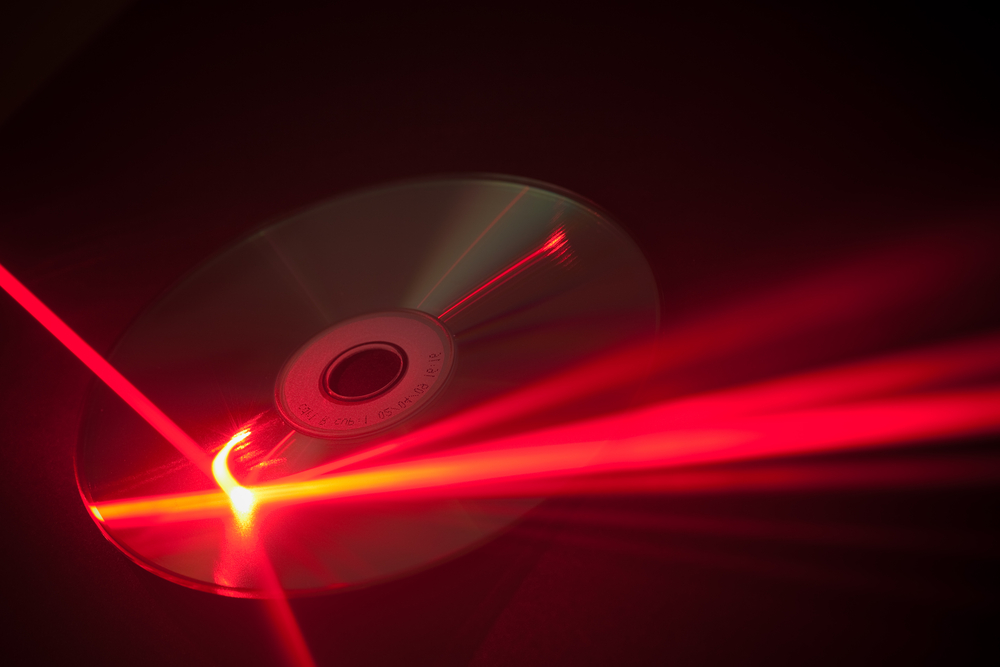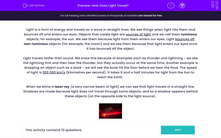Why is anything visible?
Light is a form of energy and travels as a wave in straight lines.
We see things when light hits them and bounces off and enters our eyes. Objects that create light are sources of light and we call them luminous objects, for example, the Sun. We see them because light from them enters our eyes. Light reflects off non-luminous objects and we see them because that light enters our eyes once it has bounced off the object.
For example, the moon is not a luminous object, as it is made of rock. It is only visible from Earth because the moon reflects the light from the Sun and this reflected light reaches our eyes.

The Speed of Light
The speed of light is 300,000,000 metres per second. (To give you an idea of how fast this is, a beam of light could travel around the equator of the world over 7 times in one second). Light travels faster than sound. We know this because of examples such as thunder and lightning - we see the lightning first and then hear the thunder, but they actually occur at the same time. Another example is dropping an object such as a book - we will see the book hit the floor before we hear the thud. It takes 8 and a half minutes for light from the Sun to reach the Earth.

When we shine a laser ray (a very narrow beam of light) we can see that light travels in a straight line. Shadows are made because light does not travel through some objects, and so a shadow appears behind these objects (on the opposite side to the light source).









